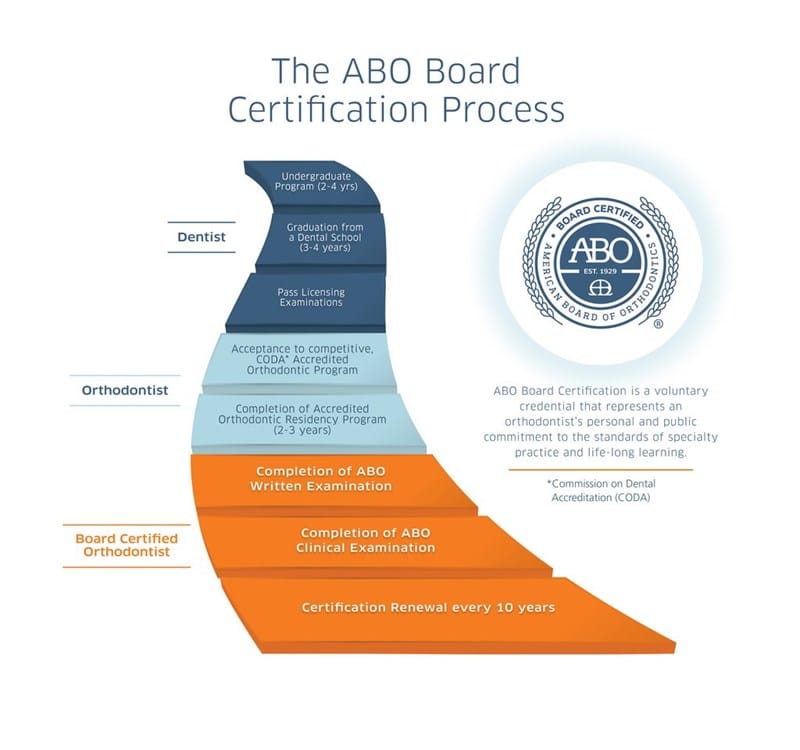Understanding Board Certification in Orthodontics
Are All Orthodontists Board Certified?
No, not all orthodontists are board certified. While every orthodontist must be licensed to practice, only a portion choose to pursue board certification. Becoming a Board-Certified Orthodontist through the American Board of Orthodontics (ABO) is a prestigious accomplishment that goes beyond the required two to three years of advanced education in orthodontics.
To earn this distinction, orthodontists must present real patient cases, demonstrating their expertise in treating a wide range of orthodontic conditions. The process includes a rigorous evaluation by a panel of experienced examiners who assess the orthodontist’s clinical skills, treatment planning, and overall judgment. Board certification is a voluntary achievement that reflects an orthodontist’s commitment to excellence.
How Many Certifying Boards Are Recognized for Orthodontics?
Only one—the American Board of Orthodontics (ABO).
Founded in 1929, the ABO is the only orthodontic specialty board recognized by the American Dental Association (ADA). It is also the oldest specialty board in dentistry. The ABO’s mission is to uphold the highest standards of orthodontic care through certification, education, and professional collaboration.
Why Do Orthodontists Choose to Become Board Certified?
Earning ABO certification demonstrates an orthodontist’s dedication to providing the highest level of patient care. It is a professional milestone that highlights:
- Expertise: A proven commitment to excellence in orthodontic treatment.
- Continuous Learning: A dedication to staying up to date with the latest advancements in orthodontics.
- Patient Trust: Assurance that the orthodontist meets the highest standards of care.
Many orthodontists view board certification as a personal and professional achievement, signifying their devotion to their patients and the orthodontic specialty.
What Is Required to Complete the ABO Certification Process?
Since its founding, the ABO has continuously evolved its certification process to meet the demands of modern orthodontics. Today, board certification requires:
- Written Examination – A rigorous 240-question test covering all aspects of orthodontic knowledge.
- Clinical Examination – A detailed review of real patient case reports, assessing treatment outcomes and expertise.
- Oral Examination – A face-to-face evaluation with a panel of examiners, testing both academic knowledge and clinical skills.
Once an orthodontist passes all three stages, they earn the distinction of Board Certification—but the journey doesn’t end there. To maintain certification, orthodontists must renew their credentials every 10 years, proving their continued commitment to top-quality patient care.
To learn more about the American Board of Orthodontics, click here.

